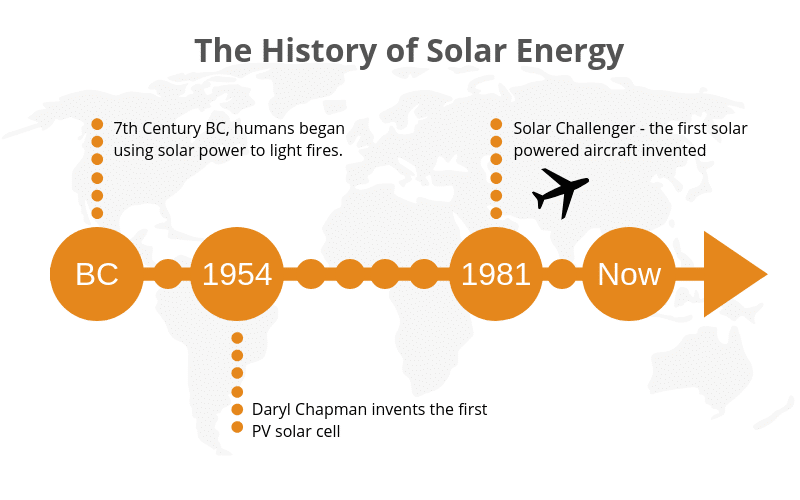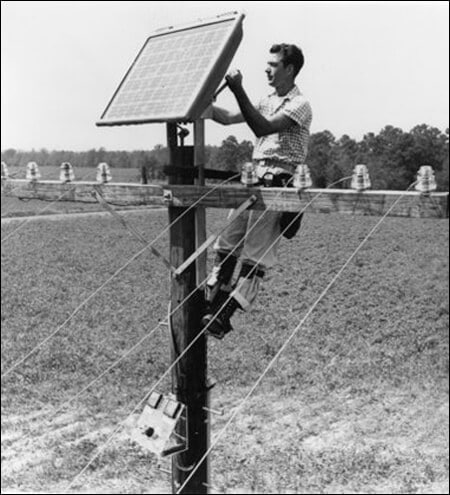History of Solar Power: Who came up with solar panels?
At the time when solar panels were invented, they led to the evolution of electricity generation. This evolution will repeat for infinite years at the hands of different scientists and developers. The story behind the invention of solar energy is interesting.
Who is the inventor of solar panels?
Actually, solar energy is not new; people have utilized solar power extending far back in the history in 7th century B.C. In its underdeveloped state, the sun’s energy has been worshiped and utilized since man started walking.
The initial use of the sun’s energy involved concentrating the solar energy on a hand glass or magnifying glass for starting the fire for cooking. Around the 3rd century B.C., Greeks and Romans sprung sunshine off of blazing mirrors in order to light holy torches during the spiritual ceremonies.
Solariums were created in yesteryears to catch the sun’s energy for its inherent warmth. These were normally south directing rooms that contained seized and absolute sunshine from reputed Roman baths to local American houses and even now they’re popular in several modern households.
Archimedes was one of the legends in the history of Greek solar igniting fire encircling ships of wood from the Holy Rome. As far as one knows, the story goes that, he reflected the sun’s energy off of bronze shields, focusing the rays and hitting the enemy before their arrival.
You can think of it as a type of medieval solar laser. But whether it’s true or not, it isn’t verified. However, this test in solar energy was tested out by the Greek navy during the 1970s. They produced fire to a test wooden ship 50m away with the help of using just the famous bronze shield and the sunlight power.
Solar energy cell technique invented:
A French physicist Edmond Becquerel discovered the photovoltaic effect in the year 1839 when testing with a cell formed by metal electrodes in a transmitting solution. He came to know that the cell generated more energy when it was open to light.
Afterward in 1873, Willoughby Smith invented that selenium can work as a photoconductor.
Mere 3 yrs. Later, in the year 1876, William Grylls Adams and Richard Evans Day used the principle of photovoltaic effect invented by Becquerel to selenium and they found that it can, in reality, produce energy when exposed to light.
Nearly 50 yrs later the invention of the photovoltaic effect, in the year 1883, the American scientist Charles Fritz developed the first working selenium solar cell. However we utilize silicon in solar cells for present-day solar panels, this selenium solar cell was a major source of the solar power technology used nowadays.
Somehow or other a number of physicists played a very important role in the invention of the solar cell.
The potential of the photovoltaic effect was uncovered by Becquerel and Fritz is responsible for really creating the ancestor for all the solar cells.
Recognition and production of solar power technology:
It was Albert Einstein who was responsible for bringing the world’s attention to solar power and its strength. A paper on the photovoltaic effect and how light transports energy by Einstein was published in the year 1905. This led to more attention and compliance for solar energy on a wide scale.
The work from Bell Labs in 1954, helped in the big leap towards the technology of the solar cell which is utilized in solar panels today. 3 scientists namely – Daryl Chapin, Calvin Fuller, and Gerald Pearson, developed more practical solar cells with the help of silicon.
The benefits of using silicon are higher efficiency and its easy availability in the form of a natural source.
Simultaneously as the space age is developing, solar panels have been used to fuel different parts of spacecraft around the late 1950s and 1960s like Vanguard I satellite in 1958, after that Vanguard II, Explorer III, and Sputnik-3.
NASA later sent the Nimbus satellite in 1964, which headed completely on its 470-watt solar power array, and now it wouldn’t have been long now that the potential of solar energy has been transferred from galactic to households and businesses.



